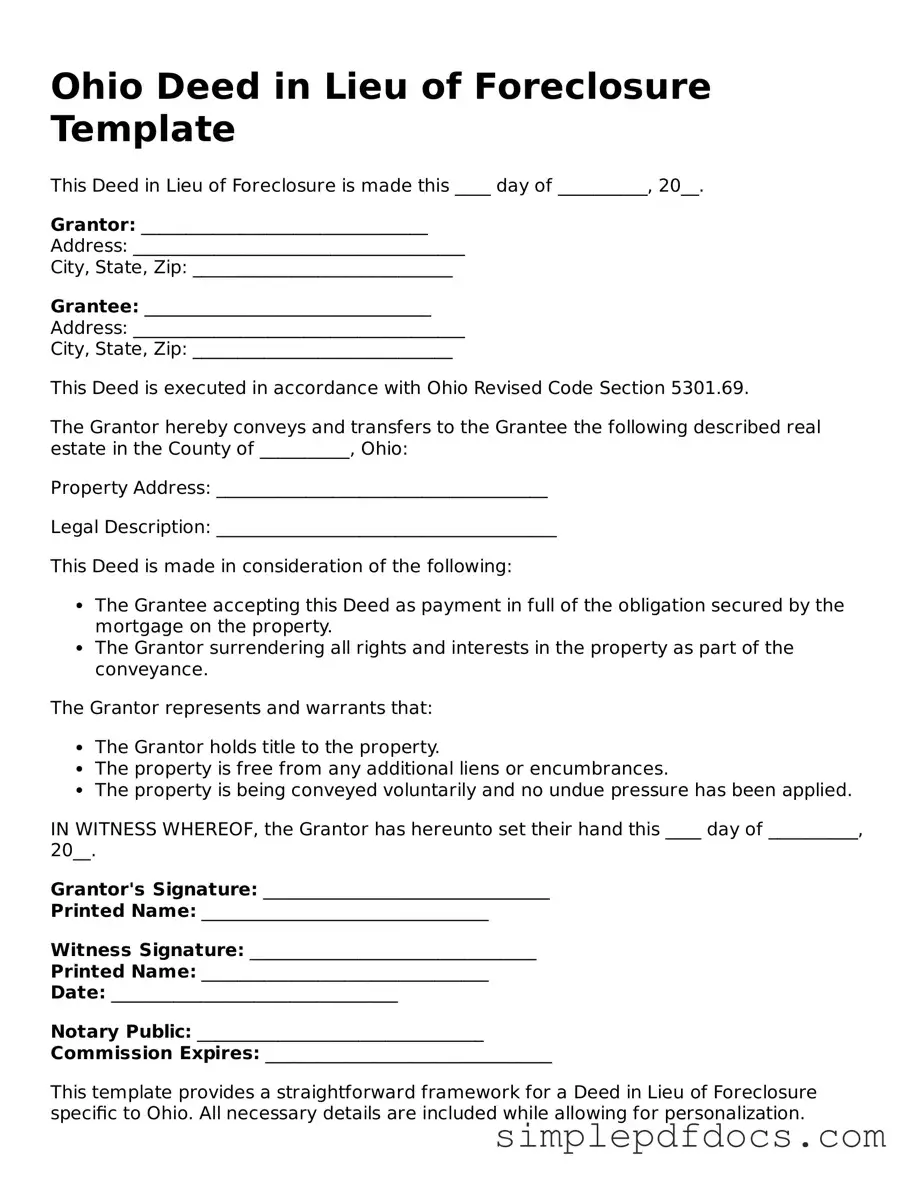In Ohio, homeowners facing the prospect of foreclosure have a potential alternative that can simplify the process and mitigate some of the financial burdens associated with losing a home. The Deed in Lieu of Foreclosure form serves as a legal instrument that allows a homeowner to voluntarily transfer ownership of their property to the lender, thereby avoiding the lengthy and often stressful foreclosure proceedings. This agreement can benefit both parties; the homeowner can escape the negative impacts of foreclosure on their credit score, while the lender can recover their investment more efficiently. The form typically outlines essential details such as the property description, the parties involved, and any existing liens or encumbrances. It also addresses the homeowner's rights and responsibilities during the transfer process. By understanding the implications and requirements of the Deed in Lieu of Foreclosure, individuals can make informed decisions that align with their financial situations and future goals.
